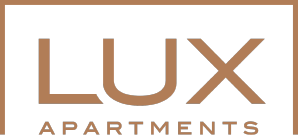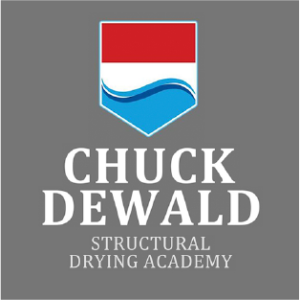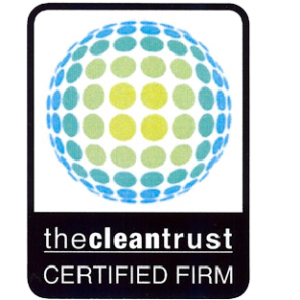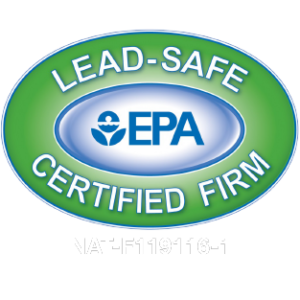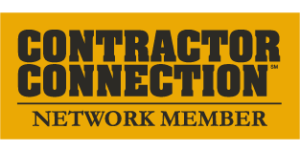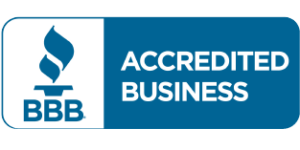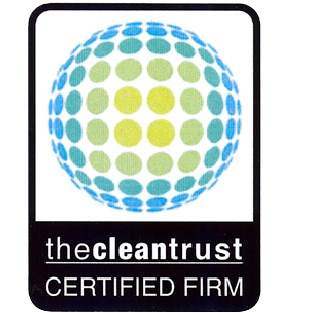Mold often lacks easily recognized symptoms, making it a silent hazard to health and property. If left untreated, it can cause as much damage as a fire.
We’ve spent the last ten years passing thousands of post-remediation verifications and working closely with indoor environmental professionals to perfect our processes. The Midwest’s weather is particularly unpredictable, and it’s common to have winter moisture problems in both Wisconsin and Minnesota. Revive Restoration is IICRC Certified to restore properties damaged by mold.
Containment Types
During mold remediation projects, contaminants are separated into three basic types.
Source
Containment
To address small or limited areas of mold growth.
—
When mold growth is limited to small, visible, and controllable areas where hidden mold growth is not anticipated.
—
In conjunction with other forms of containment.
Local
Containment
When moderate levels of fungal growth are visible or suspected.
—
When a structural enclosure can be built to contain a work area and separate it from the unaffected sections of the room or structure
Full-Scale
Containment
When significant or extensive mold growth is present or suspected.
—
Where source and local containments cannot effectively control cross-contamination
Principles of Mold Remediation
There are five general principles used in the remediation of mold-contaminated structures and materials. At Revive Restoration, we apply a multi-disciplinary approach involving multiple trades of expertise.
When an indoor environment is contaminated with mold, remediation technicians should be protected from exposure. Engineering controls and work practices are the primary means — appropriate respiratory protection or other personal protective equipment (PPE) should be used in conjunction with engineering controls.
Revive Restoration takes extensive pictures, notes, and moisture readings during all mold remediation projects. This documentation is uploaded into our job management software and provided to our clients via a real-time link that can be accessed from anywhere.
Revive Restoration might also use an independent indoor environmental professional (IEP) to evaluate data taken from air samples and tape lifts to formulate an initial hypothesis about the origin, identity, location, and extent of amplification of mold contamination. A post-remediation verification can be provided by an IEP in order to verify that the remediation was successful at returning the structure and salvageable contents to normal living conditions.
The spread of mold contamination should be controlled as close as practical to its source. Methods of control include setting up containment around the area, using air scrubbers to create negative air in order to capture all disturbed mold spores, and HEPA vacuuming mold and the entire containment.
Physically removing mold contamination is the primary means of remediation. Mold contamination should be physically removed from the structure, systems, and contents to return them to normal living conditions. Attempts to kill, encapsulate, or inhibit mold instead of proper source removal are generally not adequate.
Remediated structures, systems, and contents can be considered clean when contamination, unrestorable contaminated materials, and debris have been removed and surfaces are visibly free of dust. Remediated areas should be free of malodors associated with microorganisms.
To prevent future contamination, the moisture problem that contributed to the mold growth should be identified and corrected as soon as is practical. Revive Restoration takes mold remediation very seriously. Development of work plans, protocols, and specifications for the work to be performed are vital. While writing our scopes, the below considerations are extremely important for a successful mold remediation:
- Containment
- Pressure Differentials
- Hazardous or Regulated Materials
- Asbestos Abatement
- Vermiculite Abatement
- Safety and Health Provisions
- Content
- Contaminated Material Removal and Handling
- Detail Cleaning
- Disposal
- Post-Remediation Verification
Mold is commonly the result of water damage, but it can also be caused by high humidity due to poor ventilation.
—
Mold spores can weaken the structural integrity of a building, and pathogens threaten the health of occupants — especially infants, the elderly, pets, and anyone with a weakened immune system.
Frequently Asked Questions About Mold Damage
What are mold spores?
Mold is a common fungus that you’ve probably seen growing on old food. While certain varieties of mold are desirable under some circumstances (blue cheese is well-known for having mold cultures added), mold can cause significant damage to your home or business when left untreated in your walls, ceilings, or floors.
Mold reproduces via mold spores, which can be thought of as seeds. They are spread easily throughout the air, making it possible for patches of mold to grow quickly.
Is it dangerous to touch mold?
It usually isn’t too dangerous to touch mold unless you have a specific allergy to it. A brief brush or inhalation will be fine, so don’t worry if you accidentally touch by a mold spot while cleaning it.
Long-term exposure to mold, though, can the risk of more severe health problems, so we still recommend staying away if possible.
The health complications associated with mold typically involve the respiratory system, but skin rashes can also occur in people with sensitivities.
What health problems does mold cause?
Mold can cause a range of health problems in individuals who are sensitive to its spores. The most common symptoms are associated with the respiratory system: nasal stuffiness, coughing, and sore throats are seen often. Skin irritation can also occur with direct exposure, and in more extreme cases, headaches, fatigue, and urinary tract problems are sometimes seen.
For people who are immunocompromised due to autoimmune disorders, cancer treatment, or old age, mold can be especially harmful and might even cause severe lung infections.
What makes mold grow?
All mold needs to grow is moisture and a compatible surface. This makes it a common problem in homes and businesses — the spores don’t take long to accumulate, and only a few materials such as polished concrete are properly resistant to their growth.
Most frequently, mold grows on walls or ceilings that have experienced water damage from leaks or floods, but it can also grow in an otherwise unharmed room that has high humidity levels.
It’s a good idea to keep a humidity gauge on hand and make sure your home or business has roughly 50 percent humidity so mold doesn’t get a chance to form, especially in the winter when indoor humidity levels are typically higher.
How can I prevent mold growth in my home?
The most important way you can prevent mold is by controlling the moisture level in your home. Here are a few steps you can take:
- Keep your home’s humidity around 50 percent, especially in the winter
- Immediately wipe away any condensation that accumulates on windows or doors
- Ensure each room has adequate ventilation, especially your kitchen and bathrooms
- Regularly check your home’s exterior for potential leaks
- Clean up any water spills or damage as soon as you notice them
How long does it take for mold to grow?
Mold can start to grow in as little as 24 hours after water damage if the conditions are ideal. Surfaces that are especially susceptible to this quick mold growth are carpets and walls in rooms with high humidity levels.
If you notice any mold in your home or business, it’s important to reach out to a professional as soon as possible. Tackling the problem early will help prevent it from getting worse.
What is the difference between mold and mildew?
While they are both types of fungi that grow on similar surfaces, mold and mildew have a few key differences.
Mildew is less invasive and damaging to health than mold. It’s typically white or gray with a powdery texture that sometimes appears fluffy. Generally, mildew doesn’t cause lasting damages to surfaces like mold can.
Mold, on the other hand, is a more dense green or black growth that has a greater risk of causing long-term health complications like severe respiratory problems, joint pain, and even fatigue and depression. It has the potential to destroy entire structures, unlike mildew.
How do I tell if my house has black mold?
Black mold is particularly toxic to health, often causing severe respiratory problems, joint pain, headaches, and fatigue. It usually appears in distinct round spots on walls or ceilings and will have a deep green to black coloring.
With this rough description said, black mold is difficult to tell apart from other less harmful types of mold because it carries a similar appearance. It’s important to get in touch with a professional if you’re concerned that your home or business might be affected by any type of mold spores.
How can I tell if mold is dangerous?
While mold in general is typically regarded as harmful to your health, different types can be more dangerous than others. These varieties are referred to as “black mold” and are known for causing respiratory issues, joint problems, headaches, and fatigue.
It is difficult to tell mold types apart without extensive experience, since they all grow on similar surfaces with a green to black appearance. We recommend reaching out to a professional if you suspect your home or business has been affected by any type of mold.
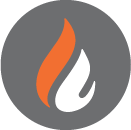
Help is on the way
Non-Emergency
Fill out our form and we will reply
within four business hours.
Emergency
Call 608.222.9222 to address your issue right away. If our phone lines are experiencing high volume, our form is a great way to get ahold of us. We monitor it 24/7 and will get back to you ASAP!
"*" indicates required fields





